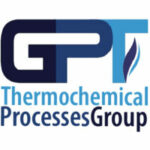ABOUT ME
Research Interests
Broadly, my research focus is on pyrolysis of organic waste and biomass. I am currently interested in the development of new and/or improved thermochemical processes for biofuels and bioproducts.
Specifically, we are now developing a carbon-negative pyrolysis system with autothermal operation. Operational tests are ongoing. We seek to further develop and scale-up this idea, ideally with an industry partner.
Simultaneously, I work in the development of integrated valorization approaches of various agricultural or animal residues via pyrolysis, and its integration with biomethane production.
I have also collaborated in the development of the Flash Carbonization technology developed by Professor Michael J. Antal at University of Hawai’i as a Visiting Scholar, and worked at Instituto de Carboquímica (Spanish National Research Council), both in postdoctoral positions.
Previously to my PhD research, I also worked in gasification (fluidized bed and downdraft reactors) at demonstration scale.

PUBLICATIONS
2025
Navarro, África; Fonts, Isabel; Ruiz, Joaquín; Ceamanos, Jesús; Gil-Lalaguna, Noemí; Ábrego, Javier; Gea, Gloria
The role of biogenic waste composition on pyrolysis: Part II – Char CO2 adsorption capacity Journal Article
In: Biomass and Bioenergy, vol. 197, pp. 107775, 2025, ISSN: 0961-9534.
@article{NAVARRO2025107775,
title = {The role of biogenic waste composition on pyrolysis: Part II – Char CO2 adsorption capacity},
author = {África Navarro and Isabel Fonts and Joaquín Ruiz and Jesús Ceamanos and Noemí Gil-Lalaguna and Javier Ábrego and Gloria Gea},
url = {https://www.sciencedirect.com/science/article/pii/S0961953425001862},
doi = {https://doi.org/10.1016/j.biombioe.2025.107775},
issn = {0961-9534},
year = {2025},
date = {2025-01-01},
urldate = {2025-01-01},
journal = {Biomass and Bioenergy},
volume = {197},
pages = {107775},
abstract = {The CO2 adsorption capacities (AC) of biochars obtained at 350, 550, and 750 °C from the main organic (cellulose, lignin, and protein) and inorganic (CaCO3) macro-components of biogenic waste, as well as from co-digested manure (CDM), have been determined for different CO2 concentrations (2–83 vol%) at 25 °C and atmospheric pressure. CO2 adsorption isotherms have been determined using two different experimental methodologies: thermogravimetric and fixed-bed dynamic adsorption tests, yielding similar results. The composition effect has been analyzed by comparing the adsorption performance of the chars derived from individual macro-components and the potential interactions occurring during their co-pyrolysis. Lignin and cellulose-derived chars showed higher CO2 retention (≈77 mg gbiochar−1) than those produced from protein (≈40 mg gbiochar−1). Pyrolyzed CaCO3 exhibited negligible CO2 adsorption. For surrogate_CDM chars, prepared at pyrolysis temperatures high enough to decompose CaCO3 in the organic matrix, experimental results showed a synergistic effect, with AC between 14 % and 47 % higher than theoretical predictions. This decomposition promoted the reverse Boudouard reaction and enhanced char microporosity. However, the improvement was insufficient to offset the dilution effect caused by the high CaCO3 content. AC results have been discussed based on the biochar textural and chemical properties, with ultramicroporosity being the key factor determining adsorption capacity. The AC of CDM-derived sorbents is similar to that of cellulose-derived, expressed per gram of waste (7–13 mg gwaste−1). Furthermore, the biochars retained at least 80 % of their initial AC after 3 adsorption-desorption cycles, indicating their potential for stable CO2 capture.},
keywords = {},
pubstate = {published},
tppubtype = {article}
}
2024
Cordoba-Ramirez, Marlon; Chejne, Farid; Alean, Jader; Gómez, Carlos A.; Navarro-Gil, África; Ábrego, Javier; Gea, Gloria
Experimental strategy for the preparation of adsorbent materials from torrefied palm kernel shell oriented to CO2 capture Journal Article
In: Environmental Science and Pollution Research, 2024, ISSN: 1614-7499.
@article{cordoba-ramirez_experimental_2024,
title = {Experimental strategy for the preparation of adsorbent materials from torrefied palm kernel shell oriented to CO2 capture},
author = {Marlon Cordoba-Ramirez and Farid Chejne and Jader Alean and Carlos A. Gómez and África Navarro-Gil and Javier Ábrego and Gloria Gea},
url = {https://doi.org/10.1007/s11356-024-32028-3},
doi = {10.1007/s11356-024-32028-3},
issn = {1614-7499},
year = {2024},
date = {2024-02-01},
urldate = {2024-02-01},
journal = {Environmental Science and Pollution Research},
abstract = {In this study, an experimental strategy to obtain biochar and activated carbon from torrefied palm kernel shell as an efficient material for CO2 removal was evaluated. Biochar was obtained by slow pyrolysis of palm kernel shell at different temperatures (350 °C, 550 °C, and 700 °C) and previously torrefied palm kernel shell at different temperatures (220 °C, 250 °C, and 280 °C). Subsequently, activated carbons were prepared by physical activation with CO2 from previously obtained biochar samples. The CO2 adsorption capacity was measured using TGA. The experimental results showed that there is a correlation between the change in the O/C and H/C ratios and the functional groups –OH and C=O observed via FTIR in the obtained char, indicating that both dehydration and deoxygenation reactions occur during torrefaction; this favors the deoxygenation reactions and makes them faster through CO2 liberation during the pyrolysis process. The microporous surface area shows a significant increase with higher pyrolysis temperatures, as a product of the continuous carbonization reactions, allowing more active sites for CO2 removal. Pyrolysis temperature is a key factor in CO2 adsorption capacity, leading to a CO2 adsorption capacity of up to 75 mg/gCO2 for biochar obtained at 700 °C from non-torrefied palm kernel shell (Char700). Activated carbon obtained from torrefied palm kernel shell at 280 °C (T280-CHAR700-AC) exhibited the highest CO2 adsorption capacity (101.9 mg/gCO2). Oxygen-containing functional groups have a direct impact on CO2 adsorption performance due to electron interactions between CO2 and these functional groups. These findings could provide a new experimental approach for obtaining optimal adsorbent materials exclusively derived from thermochemical conversion processes.},
keywords = {},
pubstate = {published},
tppubtype = {article}
}
2023
Villasana, Yanet; Armenise, Sabino; Ábrego, Javier; Atienza-Martínez, María; Hablich, Karina; Bimbela, Fernando; Cornejo, Alfonso; Gandía, Luis M.
Exploring a Low-Cost Valorization Route for Amazonian Cocoa Pod Husks through Thermochemical and Catalytic Upgrading of Pyrolysis Vapors Journal Article
In: ACS Omega, vol. 8, no. 40, pp. 37610–37621, 2023, (Publisher: American Chemical Society).
@article{villasana_exploring_2023,
title = {Exploring a Low-Cost Valorization Route for Amazonian Cocoa Pod Husks through Thermochemical and Catalytic Upgrading of Pyrolysis Vapors},
author = {Yanet Villasana and Sabino Armenise and Javier Ábrego and María Atienza-Martínez and Karina Hablich and Fernando Bimbela and Alfonso Cornejo and Luis M. Gandía},
url = {https://doi.org/10.1021/acsomega.3c06672},
doi = {10.1021/acsomega.3c06672},
year = {2023},
date = {2023-10-01},
urldate = {2023-10-01},
journal = {ACS Omega},
volume = {8},
number = {40},
pages = {37610–37621},
abstract = {Ecuador as an international leader in the production of cocoa beans produced more than 300 000 tons in 2021; hence, the management and valorization of the 2 MM tons of waste generated annually by this industry have a strategic and socioeconomic value. Consequently, appropriate technologies to avoid environmental problems and promote sustainable development and the bioeconomy, especially considering that this is a megadiverse country, are of the utmost relevance. For this reason, we explored a low-cost pyrolysis route for valorizing cocoa pod husks from Ecuador’s Amazonian region, aiming at producing pyrolysis liquids (bio-oil), biochar, and gas as an alternative chemical source from cocoa residues in the absence of hydrogen. Downstream catalytic processing of hot pyrolysis vapors using Mo- and/or Ni-based catalysts and standalone γ-Al2O3 was applied for obtaining upgraded bio-oils in a laboratory-scale fixed bed reactor, at 500 °C in a N2 atmosphere. As a result, bimetallic catalysts increased the bio-oil aqueous phase yield by 6.6%, at the expense of the organic phase due to cracking reactions according to nuclear magnetic resonance (NMR) and gas chromatography–mass spectrometry (GC–MS) results. Overall product yield remained constant, in comparison to pyrolysis without any downstream catalytic treatment (bio-oil ∼39.0–40.0 wt % and permanent gases 24.6–26.6 wt %). Ex situ reduced and passivated MoNi/γ-Al2O3 led to the lowest organic phase and highest aqueous phase yields. The product distribution between the two liquid phases was also modified by the catalytic upgrading experiments carried out, according to heteronuclear single-quantum correlation (HSQC), total correlation spectroscopy (TOCSY), and NMR analyses. The detailed composition distribution reported here shows the chemical production potential of this residue and serves as a starting point for subsequent valorizing technologies and/or processes in the food and nonfood industry beneficiating society, environment, economy, and research.},
note = {Publisher: American Chemical Society},
keywords = {},
pubstate = {published},
tppubtype = {article}
}
2020
Atienza-Martínez, María; Suraini, Nurull Nadia Binti; Ábrego, Javier; Fonts, Isabel; Lázaro, Luisa; Carstensen, Hans-Heinrich; Gea, Gloria
Functionalization of sewage sludge char by partial oxidation with molecular oxygen to enhance its adsorptive properties Journal Article
In: Journal of Cleaner Production, pp. 125201, 2020, ISSN: 09596526.
@article{Atienza-Martinez2020b,
title = {Functionalization of sewage sludge char by partial oxidation with molecular oxygen to enhance its adsorptive properties},
author = {María Atienza-Martínez and Nurull Nadia Binti Suraini and Javier Ábrego and Isabel Fonts and Luisa Lázaro and Hans-Heinrich Carstensen and Gloria Gea},
url = {https://linkinghub.elsevier.com/retrieve/pii/S0959652620352458},
doi = {10.1016/j.jclepro.2020.125201},
issn = {09596526},
year = {2020},
date = {2020-11-01},
journal = {Journal of Cleaner Production},
pages = {125201},
publisher = {Elsevier},
keywords = {},
pubstate = {published},
tppubtype = {article}
}
Arauzo, Pablo J; Atienza-Martínez, María; Ábrego, Javier; Olszewski, Maciej P; Cao, Zebin; Kruse, Andrea
Combustion Characteristics of Hydrochar and Pyrochar Derived from Digested Sewage Sludge Journal Article
In: Energies, vol. 13, no. 16, pp. 4164, 2020, ISSN: 1996-1073.
@article{Arauzo2020b,
title = {Combustion Characteristics of Hydrochar and Pyrochar Derived from Digested Sewage Sludge},
author = {Pablo J Arauzo and María Atienza-Martínez and Javier Ábrego and Maciej P Olszewski and Zebin Cao and Andrea Kruse},
url = {https://www.mdpi.com/1996-1073/13/16/4164},
doi = {10.3390/en13164164},
issn = {1996-1073},
year = {2020},
date = {2020-08-01},
journal = {Energies},
volume = {13},
number = {16},
pages = {4164},
publisher = {MDPI AG},
abstract = {<p>In this paper, hydrochars and pyrochars were produced at 260 °C under different residence times (2 and 4 h) using anaerobic digested sewage sludge (SSL) as initial feedstock. The effect of reaction time on the fuel properties of hydrochars and pyrochars was evaluated. Moreover, the combustion kinetics of raw SSL and the derived pyrochars and hydrochars without coal blending were determined at two different air flows (20 and 90 mL/min) and compared. In the same conditions, the yield of hydrochar was significantly lower than that of pyrochar, confirming the different reaction pathways followed in each process. The results showed hydrochars have lower carbon recovery and energy yield than pyrochars, making the latter more suitable for energy purposes. The thermogravimetric combustion study showed that both thermochemical treatments increased the ignition temperature but decreased the burnout temperature, which results in higher stability during handling and storage. However, raw SSL is better for combustion than hydrochar according to the combustibility index. In addition, the kinetic study showed that the activation energy of the combustion of biochars, especially pyrochar, is lower than that of raw SSL, which is advantageous for their combustion.</p>},
keywords = {},
pubstate = {published},
tppubtype = {article}
}


